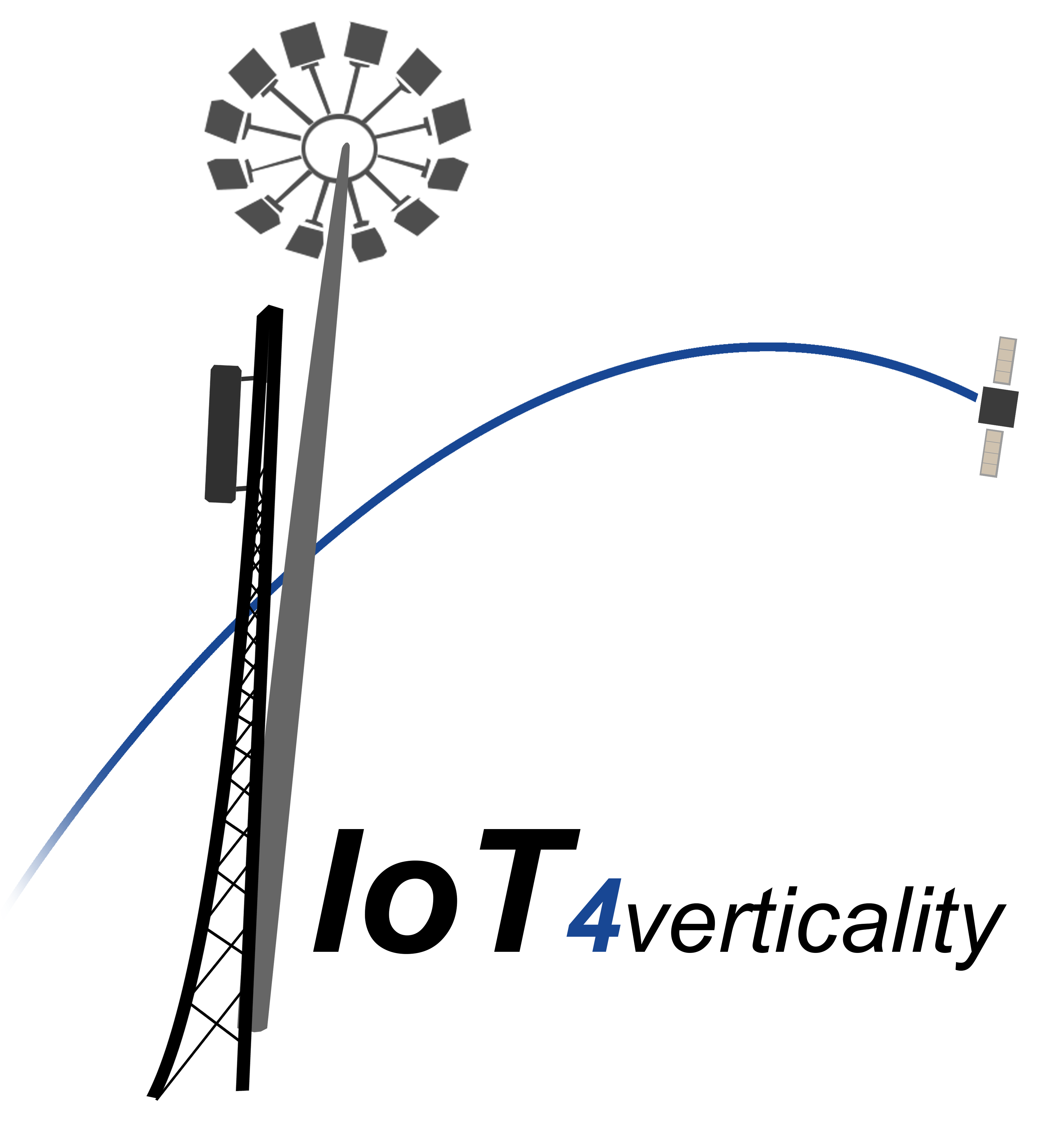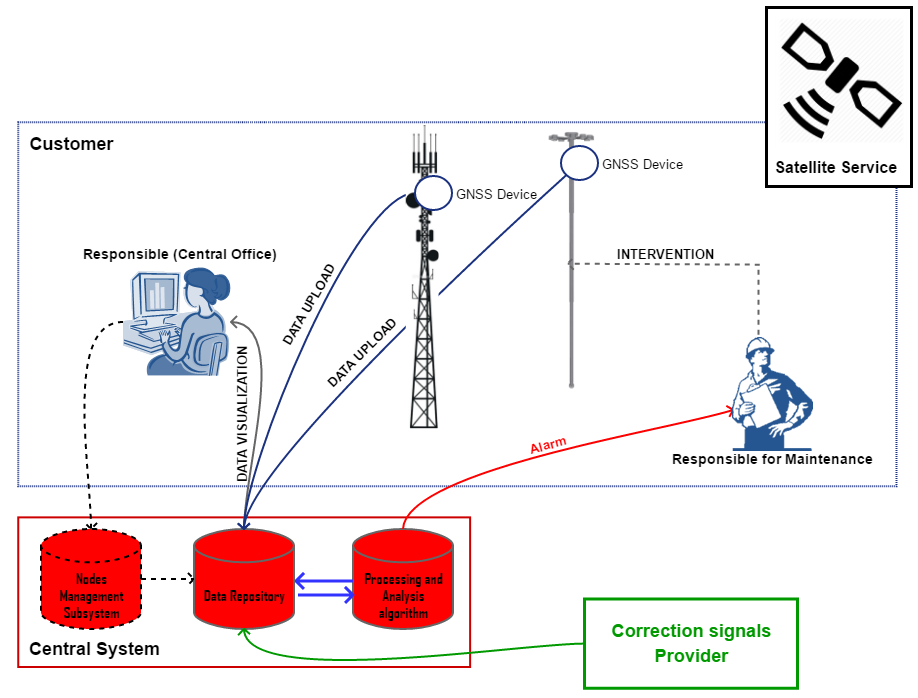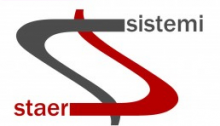
Objectives of the service
The objective of the IoT4verticality product/service is to fill the gap left uncovered by traditional inspection procedures, based on site inspections performed on time-based criteria, which periodically assess the integrity of target structures.
The main problem these structures are subjected to is the loss of verticality: external solicitations acting on the structures, in fact, tend to damage the poles/towers in correspondence of the basement and cause loss of verticality, which constitutes both a risk of potential fall and a cause for potential malfunctions.
The proposed solution aims at replacing these periodical inspection campaigns with a permanent monitoring of the infrastructures’ vertical condition. The solution also enables alarming functionalities, which alerts the users in case of exceeding of definable thresholds.
The IoT4verticality product/service provides, directly at users’ control centre, information about the tilt of monitored structures, overcoming the typical problems of the traditional inspection procedures and enabling:
- Continuous monitoring of the structures’ vertical status.
- Maintenance On-Condition.
- Optimization of site inspections and consequent economic savings
Users and their needs
Two types of structures, Base Transceiver Stations (BTS) used in the telecommunication market for hosting transmitting antennas and High Mast Lights (HML) that illuminate large areas such as parking spaces, have many commonalities related to service and maintenance and are typically subjected to the same issue, i.e. the loss of verticality, due to their tall and thin shapes.
Customer segments dealing with such issue include:
- Mobile Network Operators and tower companies
- Owners and operators of High Mast Lights
- Maintenance Service Providers for Base Transceiver Stations and High Mast Lights
These three customer segments expressed the following common needs:
- To be informed about the tilt angle and the trend of tilt angles of monitored structures;
- To be promptly alerted if the tilt angle exceeds safety thresholds (expressed as 1° for BTS and 5° for HML).
Another customer segment of interest is the Manufacturers of Base Transceiver Stations and High Mast Lights: This customer segment has the interest to integrate the IoT4Verticality into structures they produce to create the new market of innovative “self-detecting” structures, and expressed the needs that such integration shall not impact:
- the original design of the structures
- the production processes;
- the assembly and installation processes;
The targeted markets are owners, operators and manufacturers of Base Transceiver Stations and High Mast Lights in Italy and Europe.
Service/ system concept
The offered solution provides customers with information related to vertical conditions of the target structures, in particular in terms of tilt angle of the tip of the structures and its trend over time.
The service offer for the customer segments are:
- Local Devices, provided with mounting bracket, installed on target structures.
- Licensed Central System, installed at customers’ premises/on cloud. Main features:
- overview map of the status of the monitored structures (e.g. Nominal, alarmed)
- for each monitored structures, visualization of the tilt angle and the angle trend over time.
- Threshold setting;
- Notification settings (i.e. phone number(s)/ email address(es) to whom address notifications).
- Alert notification via SMS/email in case of thresholds exceeding
- Technical support in product usage, phone assistance through contact centre, trouble / ticketing system.
- The system operates autonomously, without any operator’s intervention.
Such service offer is obtained through local devices, installed on target structures, acquiring signals from Navigation satellites and transmitting them to Central System. the Central System is in charge of differential processing such signals in conjunction with correction data (provided by external providers) to precisely identify the structures’ tilt angle.

Space Added Value
The use of satellite navigation signals, acquired by receivers installed on target structures and enhanced by post-processing techniques, will allow sufficiently accurate measurements of the structures’ verticality to provide a monitoring service with continuously updated information about the structures’ verticality, including alarms in case of problems or dangerous situations.
The implementation of the offered solution generates the following added value with respect to the actual condition:
- Continuous updates of the structures’ tilt angle with respect to periodic assessment through site visits;
- Immediate alerting of exceeding of user-defined threshold (impossible with the actual technique);
- Savings of inspection cost through an optimization of the site interventions, exceeding the system implementation costs.
Current Status
The Feasibility Study is completed: the Proof-of-Concept campaigns, carried out with the involved users in real environment and operational conditions, allowed to validate the capability of the system to provide the intended service offers.
The information provided by the offered solutions can allow to save, in a 4-year timeframe, at least 12 % of the cost traditionally incurred for periodic site visits.
The accuracy in tilt angle measurements obtained during the Proof-of-Concept convinced a service provider to envision the integration of the final product into its service offer, and decided to economically support the further product development. Smart Structures Solutions and this service provider agree to pilot the end-to-end service provision on asset belonging to one or more final customers currently serviced by the identified service provider.



